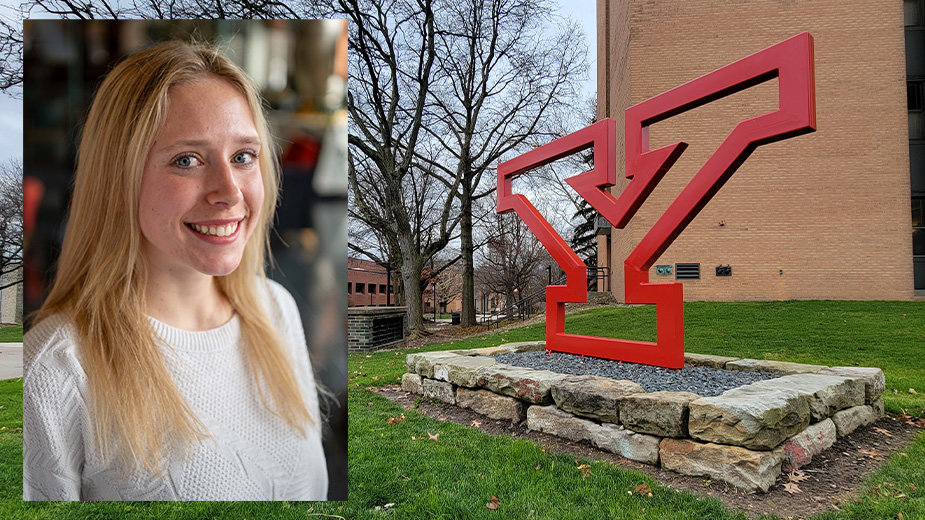Team NEO Studies Jobs Imbalance
YOUNGSTOWN, Ohio — Northeastern Ohio has more jobs than it does credentialed workers to fill them, but still fails to retain nearly half of its college graduates, according to a new report, “Aligning Opportunities in Northeast Ohio,” released by Team NEO.
The data refute speculation that a lack of jobs is to blame for the exodus of young talent. The analysis reveals economic growth is hampered by a substantial misalignment in growing, high-potential industries.
This mismatch between the skills needed and the skills available holds back the region, according to Team NEO, a Cleveland-based economic-development organization that serves 18 counties. Columbiana, Mahoning, Trumbull and Mercer (Pennsylvania) counties mimic the data in the report with nearly 14,000 available jobs as of August 2019, according to the Youngstown/Warren Regional Chamber.
“The message to those looking to build careers is that we have an abundance of job opportunities in northeast Ohio and that candidates who earn relevant credentials, whether an academic degree or a professional certification, position themselves for job success,” says Bill Koehler, CEO of Team NEO.
The goals of northeastern Ohio for a vibrant economy rely on filling openings in sectors containing the most in-demand jobs for 2018: computer and information technology, health care and manufacturing, according to the report.
The 2019 “State of Northeast Ohio Manufacturing Report” lends credence to the Aligning Opportunities report, citing: Manufacturing remains critical to the economy of northeastern Ohio, driving 14% of employment, more than 275,000 jobs and 40% of the region’s gross domestic product.
Sydney Martis, who wrote the report for Team NEO, says increased demand in manufacturing jobs requires an increase in specialized skills for future jobs.
“Jobs will require higher-skilled workers and workers with some automated skills,” Martis says. “There’s a transition to smart manufacturing and with that comes a demand for technology.”
Despite the region having a shortage in its labor force, northeastern Ohio brings more dollars into the region because of productivity, says Martis.
“But frankly, we need to be increasing awareness of future jobs and jobs in demand,” she says.
Some key findings in the report:
- The jobs in highest demand are those in the health-diagnosing and treating-practitioners fields with almost 17,000, of which 15,600 were for entry level work.
- The biggest misalignment is for computer and IT workers, such as software developers and computer programmers. There is far more employer demand in this occupational field than there is supply of matching credentials.
- Only 34% of the population in the region have earned a postsecondary credential, while another 21% have some training but no degree or certificate. The statewide projected goal is 65% by 2025.
- Less than 47% of northeastern Ohio’s 31,300 college graduates will be retained. This translates to only 14,608 graduates annually.
- The unemployment rate of African-Americans in northeastern Ohio is more than three times that of whites.
The report also looks at talent supply, industry and occupational data, educational attainment and the stark equality disparities in wealth, employment and educational attainment among racial groups that are significantly holding back regional growth.
Jobs in Demand
The report suggests an opportunity to connect qualified candidates to well-paying jobs, including the sectors in most demand – computer and IT, health care and manufacturing. These occupational groups are featured because of their impacts on northeastern Ohio’s economic climate and their potential to help create a better economy in the future.
- Computer and IT boasts the highest median annual salary, $69,077, among these three sectors, yet employer demand far exceeds adequately credentialed candidates.
- Health care has a median annual salary of $64,162, and is one of the strongest sectors in the northeastern Ohio economy. However, a daunting talent gap means northeastern Ohio might not be producing enough qualified doctors and nurses to meet the needs of its aging population.
- Manufacturing has a median annual salary of $39,050.
Northeastern Ohio continues to rebound from the Great Recession of 2007, nearly matching pre-recession output levels and outpacing the nation in productivity gains. Yet attracting skilled workers remains a challenge to manufacturers.
Analysis of Demand for Jobs
About 65% of all occupational fields have projected growth that is moderate or high.
The largest projected growth in terms of number of jobs is in other personal-care and service workers, food and beverage-serving workers, health care, and computer and information and technology fields.
Jobs by Sector in Northeastern Ohio, 2018.
Health care and social assistance led with more than 300,000, followed by government, manufacturing, retail sales, and accommodations and food service.
Supply of Skilled Talent
A significant source of technically skilled talent is supplied through high schools and career and technical education centers as well as the postsecondary level for sub-baccalaureate, baccalaureate and graduate degrees. Technical training centers educate new and experienced workers.
More than 100,000 students are enrolled in area institutions that offer sub-baccalaureate programs leading to potential associate degrees or academic certificates.
With 80,000 incumbent manufacturing workers age 55 and older nearing retirement, a Magnet survey notes that attracting skilled workers is the No. 1 challenge hampering growth.
Northeastern Ohio has rebounded since the Great Recession of 2007, outpacing the nation in productivity gains, the report states. Total job demand was 21,021 in 2018 with 2,076 credentials awarded in 2017.
Martis says career path options need to be pushed out earlier throughout the region.
“Once kids get to high school, they have a good idea of what they want to do, so a career solution is to start as early as we can,” Martis says. “Maybe sixth grade or earlier is a better time?”
Baccalaureate or Graduate Degrees
More than 180,000 students are enrolled in area institutions that offer baccalaureate or graduate degrees across a wide variety of fields. Public institutions produce the most graduates.
- Many of the more technical fields, such as information technology and engineering, produce very small numbers of baccalaureates and masters degrees compared with those in health, business and education.
- For the four-year institutions in northeastern Ohio, more than 55% of baccalaureates and masters degree are awarded in five fields: business, management and marketing, health professions and clinical sciences, education, engineering, and biological and biomedical sciences.
Graduation Retention
Northeastern Ohio has 20% fewer students than the national average. For a region with a population of 4.3 million residents, northeastern Ohio should produce 37,600 graduates with baccalaureates per year, if it were to meet the national average, compared to the 31,300 currently produced.
Increasing the retention of college graduates by 10% could net the region another 3,130 graduates who have earned a baccalaureate or higher, the report states.
That retention could translate into 445 health care, 162 computer/information technology and 263 architecture and engineering jobs.
Sarah Boyarko, chief operating officer and vice president of economic development for the Regional Chamber, says we all can help reverse the brain drain by sharing as much as possible about the employment opportunities the region has to offer.
“We need to start conversations and in some cases continue conversations about our employment opportunities with teachers, parents, businesses and the students,” she says.
Martis encourages experiential learning, such as undergraduate internships that lead to full-time employment, as one solution to increase graduate retention.
Every market has nuances that contribute to the retention rate and its overall effect on the ability to develop talent.
Competing effectively against larger markets with a strong labor pool will require increasing the number of credentials awarded as well as improving retention rates.
Disparities in Equity
The talent supply and demand mismatch in northeastern Ohio is the product of regional challenges that inhibit economic growth and prosperity for all of its residents, the report notes.
That said, there remain stark disparities in wealth, employment and educational attainment among racial groups that are significantly holding back growth in the region.
African-American, Hispanic and other minority groups have much lower educational attainment, higher unemployment rates and lower median household incomes than white and Asian populations.
Martis explains the equity information is included to show the number of obstacles in attaining higher education or postsecondary opportunities.
“As far as retention data, college, graduates are less likely to leave Northeast Ohio. Those who are less advantaged are more likely to stay after graduating,” she says.
Commuting Patterns
Residents of northeastern Ohio often travel across county lines to their jobs. About 43% work in a county different from where they live.
According to Commute Pattern by County, 2015, Columbiana was fourth of 18 counties with 61% of its residents who live there but commute to another county to work. Geauga County is the highest with 73% of residents working outside their county.
Team NEO has partnered with Junior Achievement as it is getting into the classroom so students become aware of the jobs of the future.
When recent graduates say there are no jobs available, “I don’t believe them,” Martis says.
She uses the examples of registered nursing and computers and IT. She believes that one method employers could use is establishing earlier relationships such as internships.
Boyarko says initiatives such as the chamber’s JobsNow is helping employees to find employers at the right opportunity.
“Our feedback is that employers are receiving a more significant number of applicants with appropriate skill levels who are able to do the job,” Boyarko says.
It’s a step to fill the gaps in an open job market.
About the Report
“Aligning Opportunities in Northeast Ohio, a Resource to Aid in Addressing the Demand and Supply Imbalance in the Region’s Workforce” 2019 report was compiled by Team NEO.
The nonprofit organization is a designated JobsOhio Network Partner that conducts research and data analysis. It markets northeastern Ohio as a region and strives to increase access to jobs, education and training for the 4.3 million people of the region.
Copyright 2024 The Business Journal, Youngstown, Ohio.



